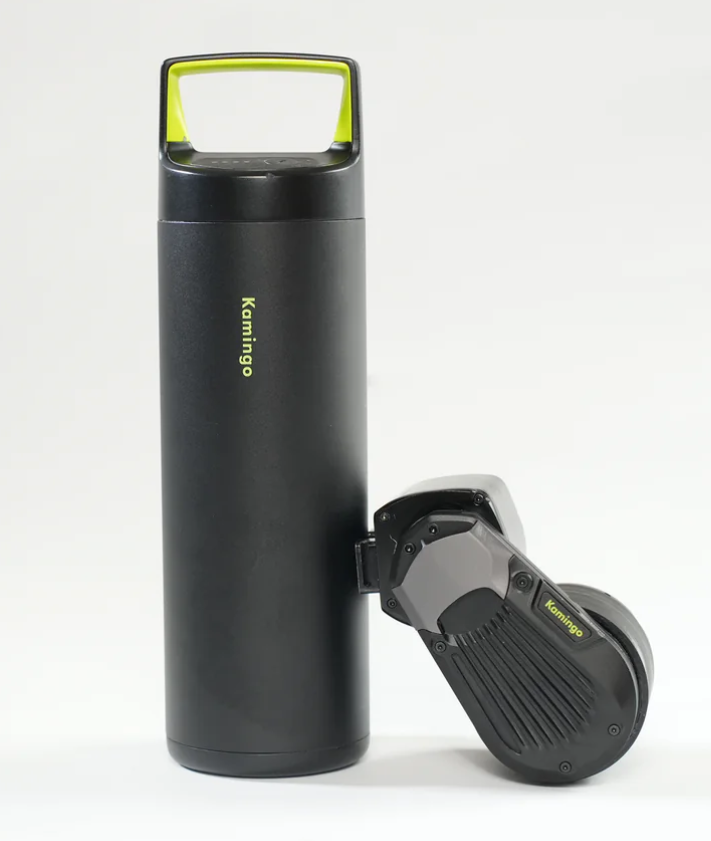This Week’s E-Bike News Headlines
Lectric unveils the XP Trike 2, Now Available with Upgrade Options
Phoenix-based Lectric eBikes has debuted its XP Trike 2. This is a highly anticipated follow-up as the original was already the number one selling electric trike in North America.
The trike’s base model comes with a 500W motor, 13Ah battery, 415 lbs total payload capacity, and a newly reworked frame in six different colors, upgraded hydraulic disc brakes, and a 50mm travel front suspension fork. All of that for just $1499.
New to the XP Trike 2 is also an upgrade option available in September. For $300 more, riders can get a 750W motor and a 17.5Ah battery, compatibility with an optional upgraded charger, as well as an upgrade from a cadence sensor to a torque-based one.
Our Take: The leap from the XP 3 to the XP 4 was a notable one. Design took a leap forward, and there was a lot of impressive tech like the brakes and motor, that impressed us. A lot of those same things are now making their way to the XP Trike 2, so we’re expecting good things to come out of this ride. Time will ultimately tell, but we’re expecting the XP Trike to retain it’s crown as the e-trike king.
Heybike Launches New Lineup of Refined Mid-Drive E-Bikes
Here’s what we know about the lineup so far:
- Model T and Model M share the same platform and core components, including a 250W Galaxy Venus mid-drive (producing 100Nm of torque), a 500Wh battery, 9-speed Shimano drivetrain, and SR Suntour front suspension.
- The Model T is aimed at commuters and trekking riders.
- The Model M, while marketed as an eMTB, leans more toward off-road trekking or SUV-style riding than true mountain biking.
- Model C is a dedicated city commuter with the same 250W mid-drive but slightly lower 80Nm torque. It pairs a 500Wh battery with a 7-speed Shimano Nexus internally geared hub.
- Model K is a compact commuter/utility bike, bearing resemblance to the Lectric ONE or a fixed-frame XP 4.0. It has the 80Nm mid-drive and 9-speed drivetrain, but uses a smaller 330Wh battery to cut weight.
- Model X is Heybike’s new cargo option, featuring the 100Nm motor, 500Wh battery, and a sturdy MIK Click Go-compatible rear rack. It’s rated for up to 330 lbs of total payload.
At the moment, these models are only available in Europe.
Our Take: This might be the most cohesive and capable batch of bikes we’ve seen from Heybike yet. Earlier models often delivered strong value but came with trade-offs in build quality or refinement.
This new generation, particularly with the unified mid-drive platform and clear design direction (much like the Heybike Alpha), suggests the brand is maturing and carving out a stronger identity. We’re especially intrigued by the Model X and Model K for their utility potential. Here’s hoping these make their way stateside soon.
Oregon Expands E-Bike Access in State Parks and Along the Coast
The new access comes with some important safety and etiquette guidelines:
- Riders must maintain controlled speeds, especially around corners or high-traffic areas.
- Trail etiquette applies—announcing when passing (e.g., “on your left”), and yielding to slower traffic, including pedestrians, horses, and children.
- E-bikes that fall outside the recognized Class 1–3 definitions are still considered motor vehicles and remain restricted from these areas.
Our Take: It’s refreshing to report good news for e-bike riders, especially in a state where the last headlines revolved around proposed Class 3 bans in bike lanes. While there’s been no official update on that proposal, this move in Oregon’s state parks signals a more balanced approach: keeping safety in mind while recognizing the growing presence and utility of e-bikes. Expanding access to bike-specific and multi-use trails—and even coastal sand—makes a lot of sense, and it’s great to see Oregon taking the lead.
Kamingo Friction Drive Conversion Kit Raises Over $1.3M on Kickstarter.
The Kamingo system is made up of several lightweight components:
- A 3-pound water-bottle-sized battery (266Wh) that fits in a standard bottle cage
- A 2-pound friction motor with 250W nominal output, 750W peak, and 40Nm of torque
- A motor mount that attaches to triangular seat stays
- A crank-mounted cadence sensor
- A handlebar-mounted control panel with color display and adjustment knob
- A connection wire to link motor and battery
The system includes both throttle and pedal assist functionality, with speeds capped at 20 mph in the U.S. or 25 km/h in Europe. Once the mounts are installed, the motor and battery can be attached in seconds for quick swaps or storage.
Kamingo also features some clever tech:
- Regenerative braking/coasting
- Pressure sensors to prevent skidding
- Fall detection that shuts off the motor in a crash
- Jam detection that disengages the motor and sends a warning if debris interferes with the tire
Final pricing is set at $589, though early Kickstarter backers can snag one for as low as $349. Add-ons like extra batteries, phone mounts, and carrying cases are also available.
Our Take: Color us intrigued. Friction-drive systems haven’t always had the best reputation, but this one appears thoughtfully designed and packed with useful safety features and tech. With over a million dollars raised, it clearly struck a chord with budget-conscious riders and those looking to electrify their existing bikes without bulky hardware. We’re eager to test this one ourselves—it might be one of the most promising lightweight conversion kits we’ve seen in a while.



